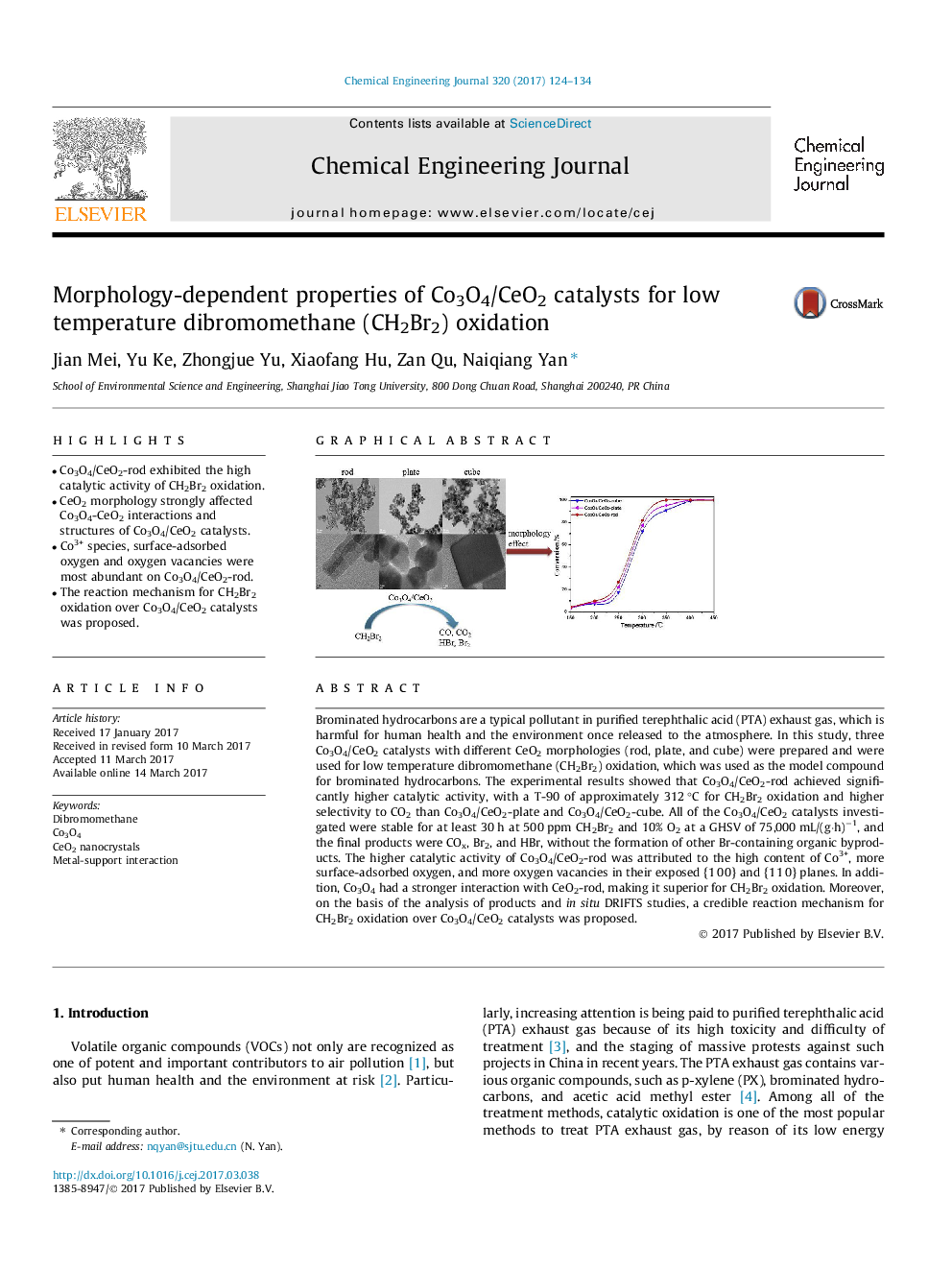| Article ID | Journal | Published Year | Pages | File Type |
|---|---|---|---|---|
| 6465921 | Chemical Engineering Journal | 2017 | 11 Pages |
â¢Co3O4/CeO2-rod exhibited the high catalytic activity of CH2Br2 oxidation.â¢CeO2 morphology strongly affected Co3O4-CeO2 interactions and structures of Co3O4/CeO2 catalysts.â¢Co3+ species, surface-adsorbed oxygen and oxygen vacancies were most abundant on Co3O4/CeO2-rod.â¢The reaction mechanism for CH2Br2 oxidation over Co3O4/CeO2 catalysts was proposed.
Brominated hydrocarbons are a typical pollutant in purified terephthalic acid (PTA) exhaust gas, which is harmful for human health and the environment once released to the atmosphere. In this study, three Co3O4/CeO2 catalysts with different CeO2 morphologies (rod, plate, and cube) were prepared and were used for low temperature dibromomethane (CH2Br2) oxidation, which was used as the model compound for brominated hydrocarbons. The experimental results showed that Co3O4/CeO2-rod achieved significantly higher catalytic activity, with a T-90 of approximately 312 °C for CH2Br2 oxidation and higher selectivity to CO2 than Co3O4/CeO2-plate and Co3O4/CeO2-cube. All of the Co3O4/CeO2 catalysts investigated were stable for at least 30 h at 500 ppm CH2Br2 and 10% O2 at a GHSV of 75,000 mL/(g·h)â1, and the final products were COx, Br2, and HBr, without the formation of other Br-containing organic byproducts. The higher catalytic activity of Co3O4/CeO2-rod was attributed to the high content of Co3+, more surface-adsorbed oxygen, and more oxygen vacancies in their exposed {1 0 0} and {1 1 0} planes. In addition, Co3O4 had a stronger interaction with CeO2-rod, making it superior for CH2Br2 oxidation. Moreover, on the basis of the analysis of products and in situ DRIFTS studies, a credible reaction mechanism for CH2Br2 oxidation over Co3O4/CeO2 catalysts was proposed.
Graphical abstractDownload high-res image (96KB)Download full-size image
